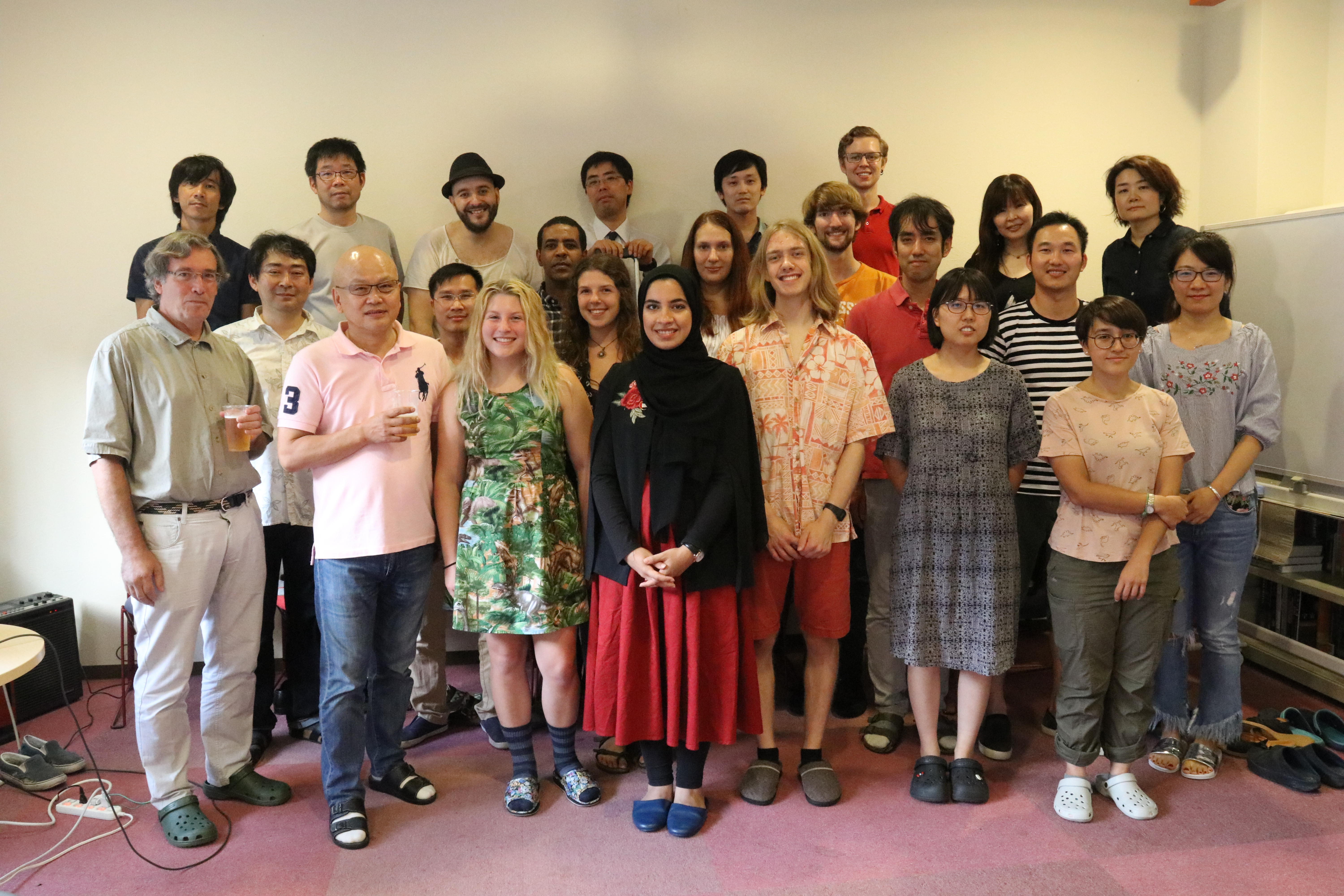MISIP2018 has ended succesfully!
08/10/2017
The middle of August has arrived and with that the end of the Misasa International Student Internship Program 2018. The students has delivered a great presentation on the symposium orgnaized for the whole institution. The main objective of the project was to characterize chondrules through textural relationships and mineral phase distributions to determine trends in mineralogy across different samples and to determine date of last alteration through Rb/Sr isotopic dating.
In order to accomplish that objectives, the students analyzed 12 samples in total, nine chondrules from the Allende (CV3) chondrite, including one CAI, and three from the Murchison CM2 chondrite, including one standard silicate chondrule, one Al-rich chondrule, and one CAI. The chondrules range in size from 0.8 mm to 2.1 mm while the CAI sizes were 1.5 mm for Allende and 2.5 mm for Murchison. The techniques employed in this program included: petrographic microscopes and energy-dispersive spectroscopy (EDS) to identify mineral phases and their major element composition. We used an electron probe microanalyzer (EPMA) to create backscatter mosaics. Using ICP-MS analysis, we determined the concentration of trace and rare earth elements present in the whole chondrules, while laser ablation ICP-MS (LA-ICP-MS) determined trace and rare earth compositions of individual phases. Rubidium and strontium isotopes were separated by cation-exchange column chemistry for thermal ionization mass spectrometry (TIMS).
The main results obtained are: 1) Euhedral Mg-olivine and subhedral low-Ca pyroxene are the dominant mineral phases (50-70%) of the Allende chondrules. The mesostasis consists of high-Ca pyroxene and a sodalite-nepheline mix with small amounts of plagioclase, and a few samples were surrounded by a complete or fragmented rim. These rims include Fe-olivine and low-Ca pyroxene phenocrysts with metal phases. Murchison chondrules have more olivine (75-85%) which showed evidence of remelting, as well as aqueous alteration indicated by serpentine veins. Our CAIs contain spinel, plagioclase, pyroxene, melilite and sodalite; 2) The chondrules are depleted in volatile elements relative to refractory elements as well as P and accompanying chalcophile and siderophile elements, likely due to metal-silicate differentiation during chondrule formation. All chondrules have a relatively chondritic REE pattern, with the two CAIs deviating from the rest, likely due to the difference in mineral phase abundances between the CAIs and chondrules; 3) The determined the age of alteration events for Allende and Murchison chondrules to be 4.152 ±200 Ga and 4.443 ±450 Ga, respectively. Allende measures younger than Murchison due the Allende parent body experiencing a later alteration event which reset the Rb-Sr system. These two ages are then estimates of the final stages of metamorphism of each chondrule. And the conclsuion of the project implies that the alteration of mineral phases coupled with Rb-Sr dating has allowed us to determine that the Allende and Murchison parent bodies experienced at least two large-scale alteration events, with the presence of sodalite and nepheline suggesting Ca-alkali alteration. The later age of Allende at 4.15 Ga and the growth of low-Ca pyroxene indicates a further stage of alteration on the Allende parent body.
